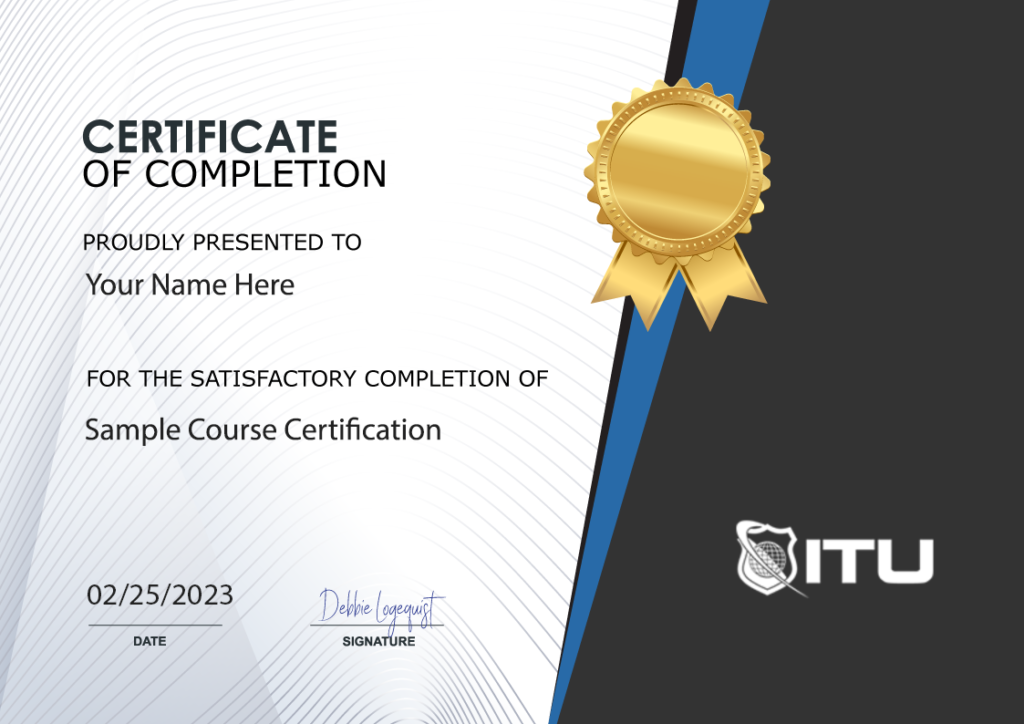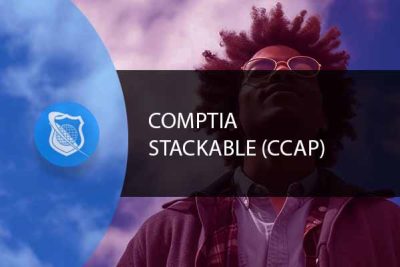
Lifetime
An ITU Online Training exclusive. The only Buy Once, Never Pay for IT training again program available. Plus, get all new and updated content for life.

With an All-Access Pass, you get access to every current and future ITU course. Access over 2,500 hours of on-demand IT Training 24/7. With over 13,000 on-demand training videos and 19,000+ practice questions, you'll have the tools to excel in the critical IT skills needed to elevate your IT Career. Our All-Access pass is available in three affordable plans.
Paris is the capital of France.
Tokyo is the capital of Japan.
Most Popular
Categories


With an All-Access Pass, you get access to every current and future ITU course. Access over 2,500 hours of on-demand IT Training 24/7. With over 13,000 on-demand training videos and 19,000+ practice questions, you'll have the tools to excel in the critical IT skills needed to elevate your IT Career. Our All-Access pass is available in three affordable plans.

ITU provides a vast array of IT-focused on-demand training designed to help you excel in both entry-level and advanced IT skills. Browse our most popular training or take a deper dive into our robust catalog of training categories.
Popular Courses All Categories
 CompTIA
Train for a globally recognized IT certification with our comprehensive CompTIA courses.
A+ | Network+ | Security+
CompTIA
Train for a globally recognized IT certification with our comprehensive CompTIA courses.
A+ | Network+ | Security+
 Cybersecurity
Master the art of combating cybersecurity threats and become a cyber hero.
Ethical Hacking (CEH) | CISSP | CISM
Cybersecurity
Master the art of combating cybersecurity threats and become a cyber hero.
Ethical Hacking (CEH) | CISSP | CISM
 Cloud Computing
An essential skill set in today's IT environments. Learn cloud computing platforms
Azure Administrator | Google Cloud | AWS Practitioner
Cloud Computing
An essential skill set in today's IT environments. Learn cloud computing platforms
Azure Administrator | Google Cloud | AWS Practitioner
 Project Management
Key to successful projects, learn the skills and methodolgy behind project management.
PMP | Risk Mgmt | Agile PM
Adobe
Business & Management
Cisco
Cloud Computing
CompTIA
Computer Support
Cybersecurity
Data Administration
Data Analysis
Development & Programming
Marketing & Social Media
Medical Coding & Billing
Microsoft
Microsoft Office
Network Administration
Networking & Software
Project Management
Web Development
Project Management
Key to successful projects, learn the skills and methodolgy behind project management.
PMP | Risk Mgmt | Agile PM
Adobe
Business & Management
Cisco
Cloud Computing
CompTIA
Computer Support
Cybersecurity
Data Administration
Data Analysis
Development & Programming
Marketing & Social Media
Medical Coding & Billing
Microsoft
Microsoft Office
Network Administration
Networking & Software
Project Management
Web Development

IT professionals with 2-5 years of experience can gain the valuable CompTIA CCAP certification by following their Certification Path. This comprehensive study guide will provide you with all the essential learning materials and advice needed to ace both your CompTIA Network+ and Cloud+ exams, giving you a competitive edge in today’s ever-evolving tech industry.
Included In This Course
Closed Captions
Certificate of Completion
Course Description
The CompTIA CCAP is a stackable certification by CompTIA. It is designed for IT professionals with 2 to 5 years of experience. The ITU Certification Path for the CompTIA CCAP certification consists of the learning materials to allow you to study for and pass the CompTIA Network+ and CompTIA Cloud+ exams. The two courses contained in this path are:
CompTIA Network+ encompasses the setup, regulation, and diagnosing of regular wired and wireless network platforms. It is designed to hone in on crucial security approaches, cloud computing protocols and service forms, up-to-date hardware components as well as virtualization systems for professionals who wish to fine tune their networks’ resilience.
Topics reviewed
CompTIA Cloud+ If you’re looking to ensure your business is secure, reliable and efficient by leveraging cloud computing solutions, the CompTIA Cloud+ certification proves that you have the know-how necessary to deploy and automate a strong cloud environment.
Topics reviewed
Upon successfully passing the applicable exams provided by CompTIA, you will earn the CCAP certification badge.
For more information on CompTIA Stackable Certifications, visit the CompTIA website. Pricing charged by CompTIA varies by exam. For details on current pricing, visit CompTIA Pricing on their website.
The CompTIA Cloud Admin Professional (CCAP) course is a comprehensive study guide that provides essential learning materials and advice to help you pass the CompTIA Network+ and Cloud+ exams. It’s designed for IT professionals with 2-5 years of experience, aiming to give them a competitive edge in the tech industry.
The course includes 60 hours of training, 340 videos, 34 topics, and 279 practice questions. It covers the necessary materials to study for and pass the CompTIA Network+ and Cloud+ exams.
The course is instructed by Dawn Briggs, an IT professional with more than 20 years of experience, and Chrys Thorsen, an education and technology expert who specializes in enterprise-level IT infrastructure consulting and certified training-of-trainers.
Upon completion of the course and passing the exams, you’ll acquire skills in business continuity, cloud networking, cloud security, network management, network security, network troubleshooting, orchestration, routing and switching, service level agreements (SLAs), software-defined networking, virtualization, and virtual networks.
To earn the CompTIA CCAP certification, you need to pass the CompTIA Network+ and Cloud+ exams. After successfully passing the exams, you will earn the CCAP certification badge.
You can access this course and over 2,500 hours of on-demand content with the All Access Monthly Subscription. You get a 7-day free trial, and you can cancel anytime.

Course Outline
Dawn Briggs is an information technology professional with more than 20 years of experience in directing IT departments, leading technical implementations, managing personnel, ensuring the security of information, and establishing high customer service standards. Although she has a broad range of experience across the IT industry that includes everything from pc repair to database management, her career has primarily focused on training technical personnel to plan, implement, and maintain IT infrastructure and web-based technologies. Dawn has been instructing students in IT courses, and mentoring students in skills that allow them to obtain jobs in information technology career fields, for over seven years.
Chrys Thorsen is an education and technology expert who specializes in enterprise-level IT infrastructure consulting and certified training-of-trainers. In her career, she has garnered over 50 IT Certifications including CISSP, CISA, CEHv12, PenTest+, CompTIA CNVP, Cisco CCSI/CCNP, Microsoft Cloud and on-premises technologies, VMware vSphere, and many more. She has also authored 40 published certification textbooks, and over 35 full-length IT certification video courses.
When not working in the United States, Chrys spends her time abroad capacity-building IT literacy in developing nations in Sub-Saharan Africa. Her client list has included: the US Federal Government, the Republic of Zambia Ministry of Health, Cavendish University Zambia, Accenture, JP Morgan Chase, the US Centers for Disease Control and Prevention, the Elizabeth Glaser Pediatric AIDS Foundation (EGPAF), Hughes Aircraft, Microsoft, and many more.
Chrys lives by, and is fond of repeating, her professional creed:
“The only true measure of success for any project or training is results on the ground. Everything else is just noise.” “I teach what I deploy; I deploy what I teach.”
Start this course for free with our 10-day trial of the all-access subscription providing access to over 2,600 hours of training.
$59.00

Monthly All-Access Subscription
7 Days Free - $39.00 / month
A great option at an affordable monthly price.
Annual All-Access Subscription
$229 / year
A discounted price when paying for your All Access library on an annual basis.
Lifetime All-Access Library
$379 One time payment
Exceptional Value. Pay once, never have to buy IT training again.
$79.00 $47.40
Get all 12 CompTIA courses for one low price in this comprehensive training series. Our CompTIA certification training courses are comprehensive, providing IT professionals with 12 courses that feature the Core Series for A+ certification as well as introducing our innovative IT Fundamentals (ITF+) course! Furthermore, we have PenTest+, Security+, Cloud+ and Network+. For those seeking to become an expert in IT certifications – this is the training product for you!
$49.00
In this ITF+ course you will learn the fundamental IT skills in subjects areas including hardware, software, programming, security, and infrastructure that is needed to pass the CompTIA FC0-U61 IT Fundamentals (ITF+) exam.
$59.00
The CompTIA CSIS is a progressive certification in the IT field that was crafted by CompTIA. It is ideal for those with 0-2 years of experience who are looking to upskill. At ITU, we offer an extensive Certification Path which comes bundled with educative materials and preparing you to pass the three exams;CompTIA A+, Comptia Network+ and Comptia Security+.

Unlock endless learning opportunities with over 2,500 hours of IT training at our lowest price ever. Plus, get all new and updated online courses for free while your subscription remains active.
Cancel at your convenience. This exceptional deal on IT training provides you access to high-quality IT education at the lowest monthly subscription rate in the market. Boost your IT skills and join our journey towards a smarter tomorrow.
Mary Beth helped me. She was wonderful.